If you ever searched for Chinese radios on platforms like Aliexpress you have probably seen a Baojie-brand mobile radio at some point among all the Baofeng HTs.
There are generally two types of this radio: The BJ-218 with a standard LCD-Display and the BJ-318 with a TFT-color-display. There isn't any other difference between these models as far as I'm concerned.
Both models cost about the same at around 60 dollars including a programming cable on Aliexpress. But I already found the BJ-218 being sold on Amazon for more than $100!
Let's go straight to the pros of the radio and what makes it look promising:
Obviously the TFT-color-display is probably a big part of what makes this radio look interesting.
25 Watts is a nice amount of power. According to the manual it pulls nearly 10 amps at that power though. Power steps are 5W, 10W and 25W.
The radio even has a cooling fan on its back.
I'm a big friend of illuminated buttons myself, especially on mobile radios for night use.
The color tint is a greenish-yellow. All in all I think the color is quite pleasant. The brightness can't be changed, but it's very comfortable as is; even while driving at night.
The buttons on the DTMF-microphone are illuminated as well in a very nice amber color. I'd prefer the buttons on the radio to have the same color.
It is possible to select memory and VFO-mode for the A and B-frequency individually. Even better: You can also switch between displaying the programmed channel name or the channel frequency.
This is a big pro over Baofeng-radios for example.
The mounting bracket is really nicely made. The radio is secured in place by two screws on each side. One screw acts as some kind of pivot point, still allowing it to tilt and the other one completely fixes it in place.
Well then, before you get all excited let's take a look at the cons:
The first time I used it people told me I'm extremely quiet.
It took some time to figure out the correct way to talk into the microphone. I have to completely press it against my mouth
If I get lazy and move away for even a quarter inch I'm immediately getting called out on my bad mic discipline.
As always with China microphones: The sound quality and loudness can be improved by removing all the junk the Chinese build around their microphones on the inside and by drilling up the mic hole. I haven't tried it yet, but there reports that this indeed works.
But be sure to still have some kind of pop protection e.g. a layer of textile between the mic hole and the capsule.
All the beeping sounds on this radio are absolutely eardrum-rupturing. Especially the power-on-sound. It can even be heard outside of the car from many meters away (with closed doors of course).
I'm a friend of key beeps as well, but it's the same with them. Every keypress creates a beep so loud, it's already inducing ear pain.
The key beeps can be turned off, but I don't know about the power-on-tone. Haven't tried it out, but there is a chance it's linked to the key beep setting.
This is one of the biggest disappointments with the radio: The S-Meter is complete and utter fake. The only purpose it serves is showing "3" when transmitting on low power, "6" when on medium power and "9" when transmitting on high power.
As soon as the squelch opens up it shows S9 continously (nice feature for contests though HI). When the squelch is closed it shows nothing.
Another big disappointment is the realisation that the TFT-display is not really much better than the LCD-version.
In general I think that LCD-technology is superior to TFT, at least in this area.
The display is small and the font is even smaller. It's hard to read from a distance and it's obviously bright because of the screen backlight.
There isn't really much more information displayed on the TFT compared to the BJ-218 with the LCD. You just see the indicators for W/N, power level or tone squelch settings for both A and B at once. But that's it. Enormeous whitespace on all of the display.
My guess is they wanted to "go with time" and make the radio look modern so more people buy it. It's the same shitty firmware the BJ-218 has with support for the TFT-display being lazily added.
BUT WAIT, it gets worse...
Keep one thing in mind: The next three issues including this one, are not limited to my specific radio I got. There are countless reports of the same problem over and over again. Following issues are the norm, not the exception!
The receiver sometimes crashes seemingly random. It just stops receiving. When that happens the S-Meter "Busy-indicator" also lights up continously but no sound can be heard. I think even normal interference (QRM) can cause this.
Pretty annoying if that happens without you noticing immediately. And it's not even something that only happens rarely.
After restarting the device it works again.
Once it even happened that the radio sent out a carrier but didn't modulate an audio signal on it. It just transmitted empty carriers. The receiver still worked this time so the other station was able to point out the malfunction.
In this case a restart also "fixed" it.
HF easily radiates into the BJ-318 and messes things up. The display begins displaying all kinds of strange artefacts and usually the receiver dies after a few seconds.
As always: Restarting fixes it.
The speaker pops whenever sound starts and stops playing. It's just a sign of poor quality.
Interference breaks through the squelch all the time. Sometimes it even stays open for a prolonged time while blaring out some rattling interference noise. It's god awful.
I don't know how to describe it, but the keys feel "mushy". They are made of really soft rubber and as such also compress a lot when you click them.
They are not really standing out from the housing too, to begin with, so that's what makes it a bit awkward to press the keys.
Listening to weak signals is a pain on the BJ-318. Something is not quite right with the way the squelch is handled. It must be a too low (or probably non-existent) hysteresis or delay.
Sometimes the squelch opens and closes multiple times a second.
There is no option for the BJ-318 in Chirp. But it can be programmed using the BJ-218-option.
The character limit for channel names remains at 7 though! I haven't found any other free programming software, so it seems you can't even take advantage of the space on the TFT.
The text-color can be changed for A and B individually. Available colors are black, purple, green, red and blue. Though different viewing angles on the TFT make the color tint shift dramatically.
If the radio was turned on before cutting electricity it will automatically turn on again when electricity is turned on.
So, switching on the ignition in the car will start it. I don't know of a radio that doesn't act like that but I just confirm that it works on this model.
There is not an option to make programmed channels available for both A and B as far as I'm concerned.
The Baojie BJ-318 is a god-awful radio. Stay away from it as far as you can. It's the worst radio I ever had, even worse than any Baofeng. Baofengs at least work.
If you absolutely want a Baojie-radio, for whatever reason that is, you are probably better off buying the BJ-218 with LCD-display.
The BJ-318 is probably only made to look modern and the TFT is implemented with the least possible effort.
The BJ-218 is also the only one I found being sold on Amazon. Maybe that means the BJ-218 is still more robust than the BJ-318, which perhaps didn't pass quality checks.
If you have further questions about the radio, please feel free to ask them in the comments and I will do my best to answer them.
An alternative would be the Leixen VV-898 in the same price category. It's probably the best dual-band mobile radio you can get for under $100. A review like this is coming soon. It's also the only radio under $100 I found that has an actual, working S-Meter.
Die Anne Pro ist eine geniale Tastatur. Ich selbst verwende seit zwei Jahren noch immer dieselbe Anne Pro 1 mit braunen Gateron-Switches. Die Faszination und Begeisterung hat nicht nachgelassen.
Das ANSI-Layout bevorzuge ich seitdem. Die Anordnung der Tasten finde ich persönlich, vor allem für Programmierarbeiten, angenehmer und sinnvoller.
Nur die Umlaute und das scharfe S geht natürlich ab. Dazu habe ich mir ein Autohotkey-Skript gebastelt.
Autohotkey ist eine kostenlose, Open-Source-Software. Man kann damit alles regeln, was Tasten hat und zum Beispiel Makros erstellen.
Autohotkey wird für das Skript benötigt. Zum Glück ist AHK "set&forget", läuft im Hintergrund und meldet sich auch nie mit aufdringlicher Werbung oder ähnlichem.
Zentraler Bestandteil des Skripts ist die ALT-Taste (egal ob links oder rechts). Sie lässt sich während dem Schreiben besonders angenehm mit dem Daumen drücken und passt sich überraschend gut in den Schreibfluss ein.
Ich persönlich habe nur ca. zwei Stunden gebraucht, um mich daran zu gewöhnen.
Bei gedrückter ALT-Taste, werden "IJKL" zu Pfeiltasten. Sogar noch angenehmer und einfacher zu benützen als die weggefallenen, normalen Pfeiltasten.
Mein einziges Problem mit ANSI US ist der Tausch von Y und Z. Daher mache ich diesen Tausch im Skript rückgängig.
Wer den Tausch von Y und Z lieber beibehalten möchte, kann die untersten beiden Zeilen einfach löschen.
Um das Skript zu verwenden, muss eine neue Datei mit der Dateiendung ".ahk" erstellt und das nachfolgende Skript eingefügt werden. Der Name ist egal.
Alternativ biete ich unter dem Skript auch einen Direktdownload der passenden Datei an.
#NoEnv ; Recommended for performance and compatibility with future AutoHotkey releases.
; #Warn ; Enable warnings to assist with detecting common errors.
SendMode Input ; Recommended for new scripts due to its superior speed and reliability.
SetWorkingDir %A_ScriptDir% ; Ensures a consistent starting directory.
; *** ARROW KEYS IJKL ***
*!i::Send,{Up}
*!j::Send,{Left}
*!k::Send,{Down}
*!l::Send,{Right}
; *** UMLAUTE ***
*!o::Send,{ö}
*!+o::Send,{Ö}
*!a::Send,{ä}
*!+a::Send,{Ä}
*!u::Send,{ü}
*!+u::Send,{Ü}
; *** SCHARFES S ***
*!s::Send,{ß}
*!+s::Send,{ẞ}
; ZY KEYS
y::z
z::y
Der letzte Schritt ist es, das Skript automatisch mit Windows mitzustarten.
Das geht sehr schnell und einfach: https://ahkde.github.io/docs/FAQ.htm#Startup
Im Grunde funktioniert das Skript ausgesprochen zuverlässig. In zwei Jahren Nutzung hatte ich noch nie einen Ausfall.
Weil ein Autohotkey-Skript aber trotz allem einige Level über der direkten Tastatureingabe liegt, gibt es natürlich ein paar Grenzen.
Bei spezielleren Anwendungen, oft auch Spielen, wird wohl tieferliegend im System auf die Tastatur zugegriffen. In diesen Fällen kann das Skript nicht eingreifen.
The moment I saw this calculator, I knew I need to have it.
I have never seen something similar before and it's a welcome difference to the dry market of calculators.
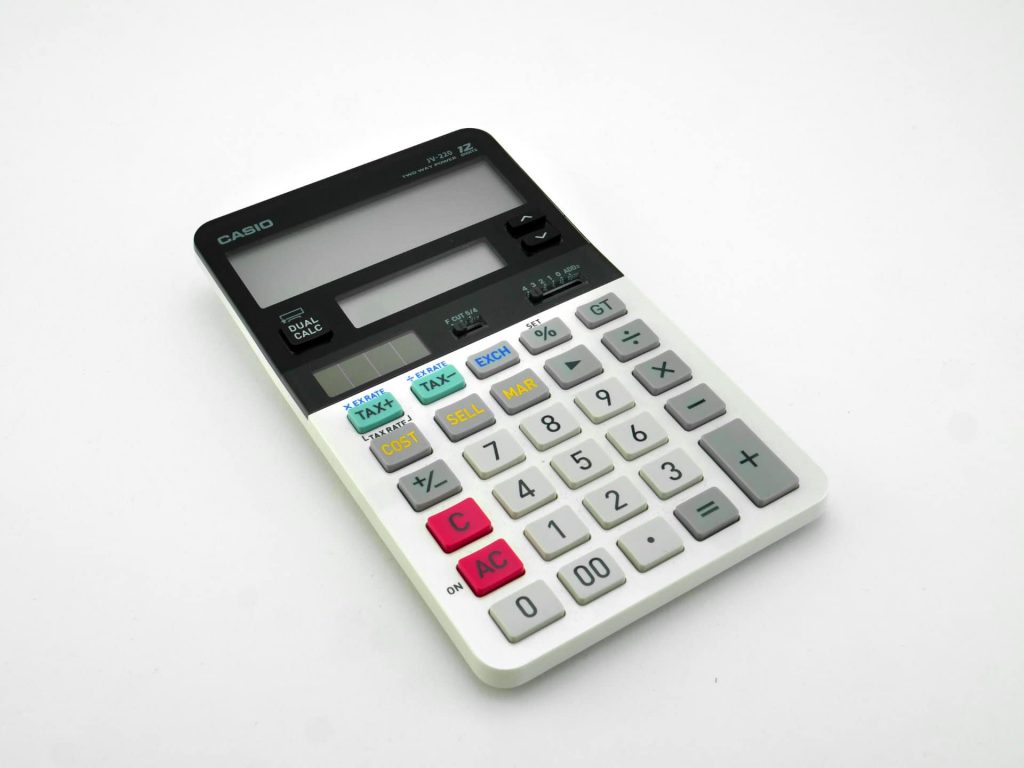
UNIQUE DUAL DISPLAY
This calculator has a one-of-a-kind functionality.
MODERN LOOK
Especially the seamless display-portion makes for a nice optic.
RUBBER PADS
Four rubber pads at the bottom ensure a stable stand on the desk.
COMFORTABLE, WELL-THOUGHT-OUT KEY LAYOUT
The keys are positioned in a way, that everyday-use is comfortable.
DOUBLE-ZERO
Double-zero key for quick input of big numbers.
ROUNDING SETTINGS
Many different rounding settings for many fields of application.
BACKSPACE KEY
Backspace key to delete inputs one-by-one.
BRIGHT KEY-PORTION
The key-area of the calculator is in bright colors which can be a bit distracting.
DISPLAY HAS STRONG REFLECTIONS
The seamless display-portion is very reflective. It can be very hard to see the display at night.
DISPLAY HAS WEIRD VIEWING ANGLE
The optimal viewing angle is unusually flat. The numbers are nearly invisible when looked at top-down.
PARTIALLY SLOW REACTION-TIMES AND "LOADING TIMES"
Typing in numbers feels a bit slower and not as "direct" when compared to other calculators.
Pressing [DUAL CALC] (explained below) does not switch in an instant, but rather takes some time best described as "loading time".
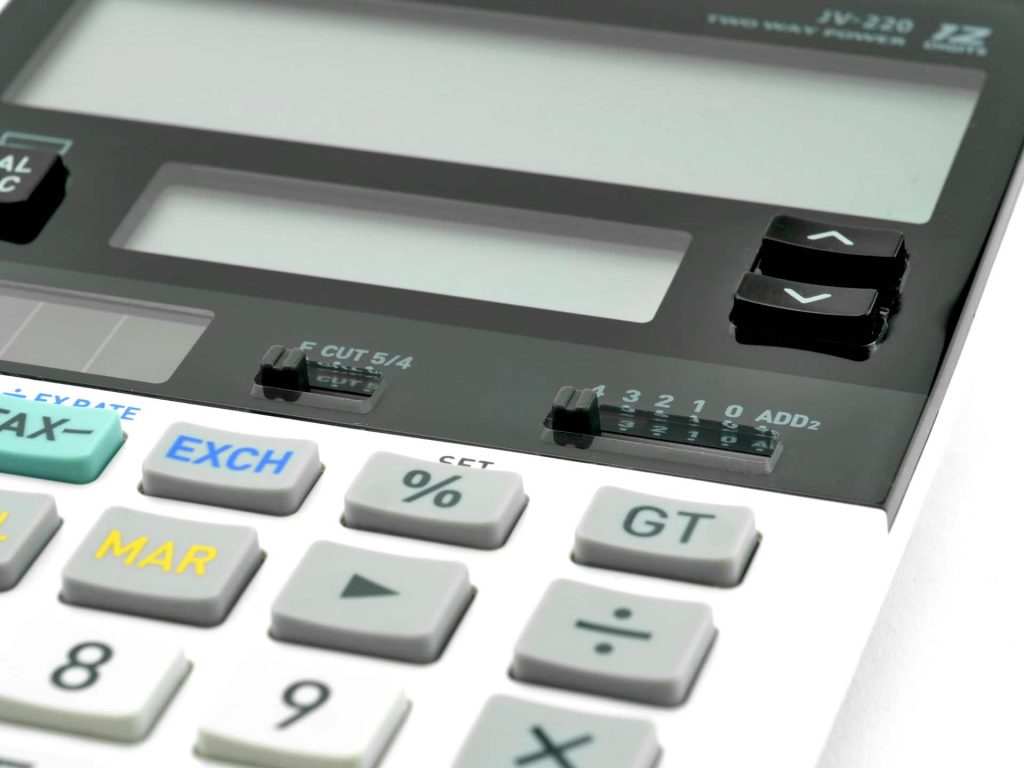
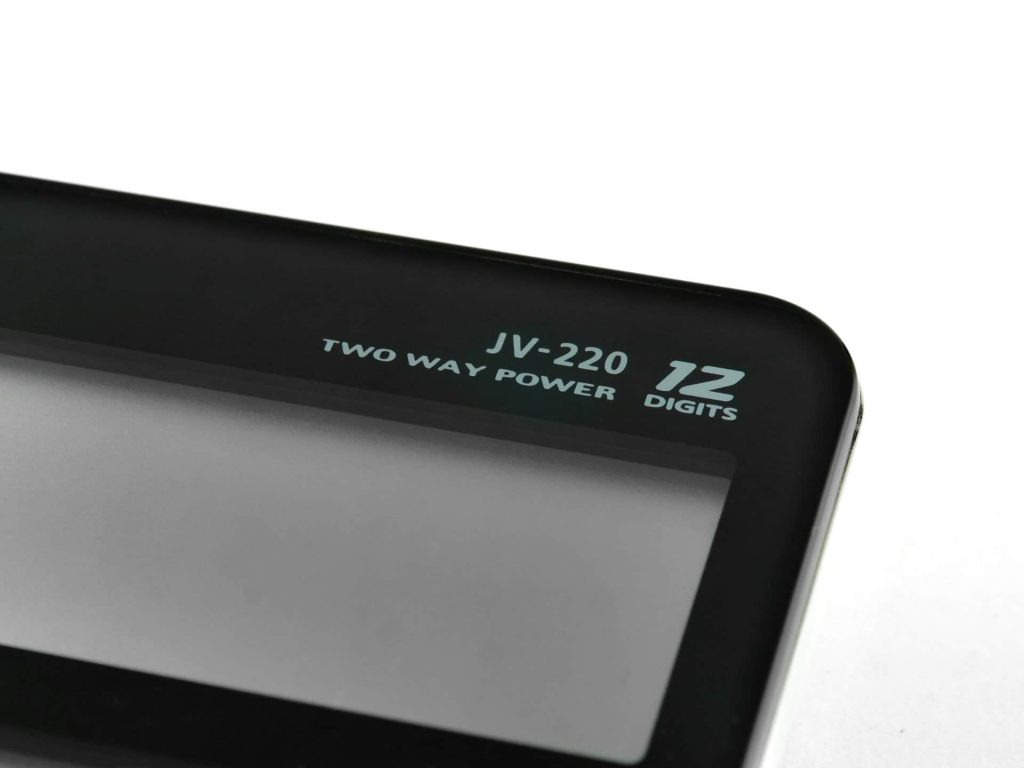
The calculator has three additional buttons, compared to a regular calculator.

DUAL CALC
The JV-220 handles one display as primary and the other as secondary display. All calculations you make will be performed on the primary display you selected.
Using the "DUAL CALC"-button you can change the primary display at any time; meaning you can choose which display to use for a calculation whenever you want.

UP-DOWN-BUTTONS
The up-down-buttons copy a value from one field to the other.
If you press DOWN the value from the top display will be copied into the bottom display.
Same with UP: The value will be copied from the bottom display into the top display.
This, of course, also works during a calculation.
This enhanced functionality is really useful. Let's take an example:
CALCULATION EXAMPLE
Adding up these lengths of material:
23 cm
84 cm
7 x 23,5 cm
0,37 x 34,9
NORMAL CALCULATOR
7 [*] 23,5 [=]
Jot down result on paper
0,37 [*] 23,5 [=]
Jot down result on paper
23 [+]
84 [+]
Type in result from paper [+]
Type in result from paper [=]
JV-220
23 [+]
84 [+]
[DUAL CALC] 7 [*] 23,5 [=]
[DUAL CALC] [COPY UP] [+]
[DUAL CALC] 0,37 [*] 34,9 [=]
[DUAL CALC] [COPY UP] [=]
And there you go.
If you realize there's a value you are missing to finish your main calculation, just calculate it on the same calculator and copy it into your main calculation.
It's like having two calculators next to each other but way better. I immediately fell in love with this feature.
This desk calculator is wonderfully simple. A timeless classic. Always there when you need it.
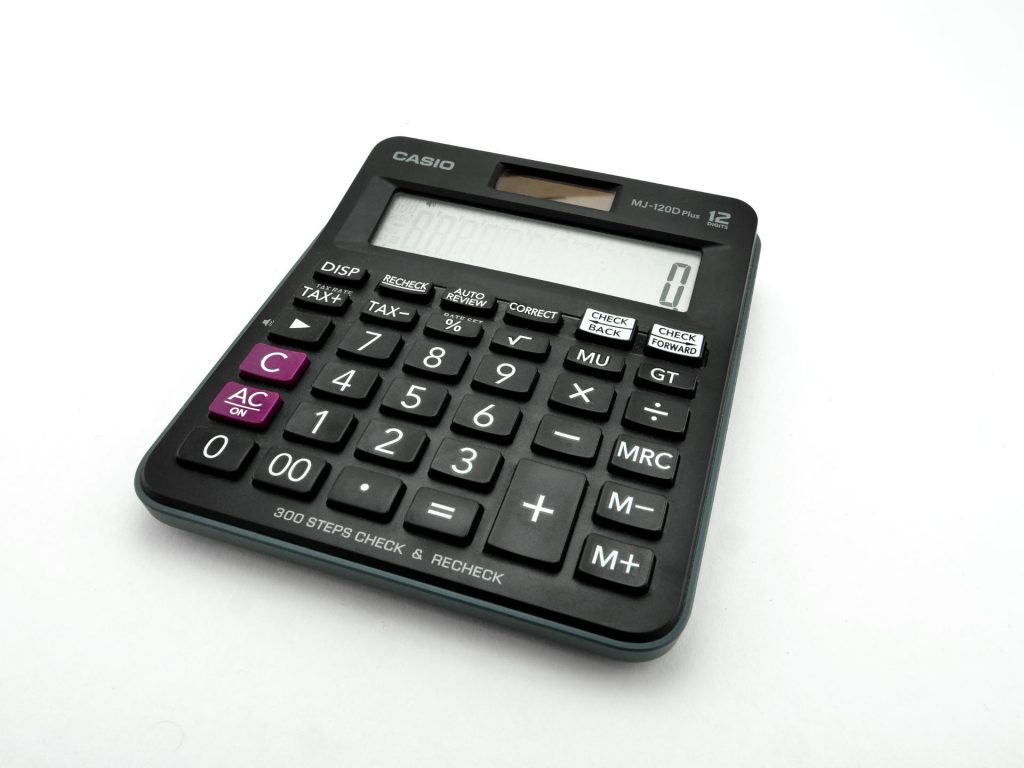
DISPLAY NOT REFLECTIVE
Unlike newer models of Casio calculators, the display does not show any disturbing reflections.
CHECK & CORRECT FEATURE
You can review the history of your calculations and even correct them.
COMFORTABLE, WELL-THOUGHT-OUT KEY LAYOUT
The keys are positioned in a comfortable way.
VERY COMFORTABLE KEY-HAPTIC
The feeling of the keys is with the best I ever had.
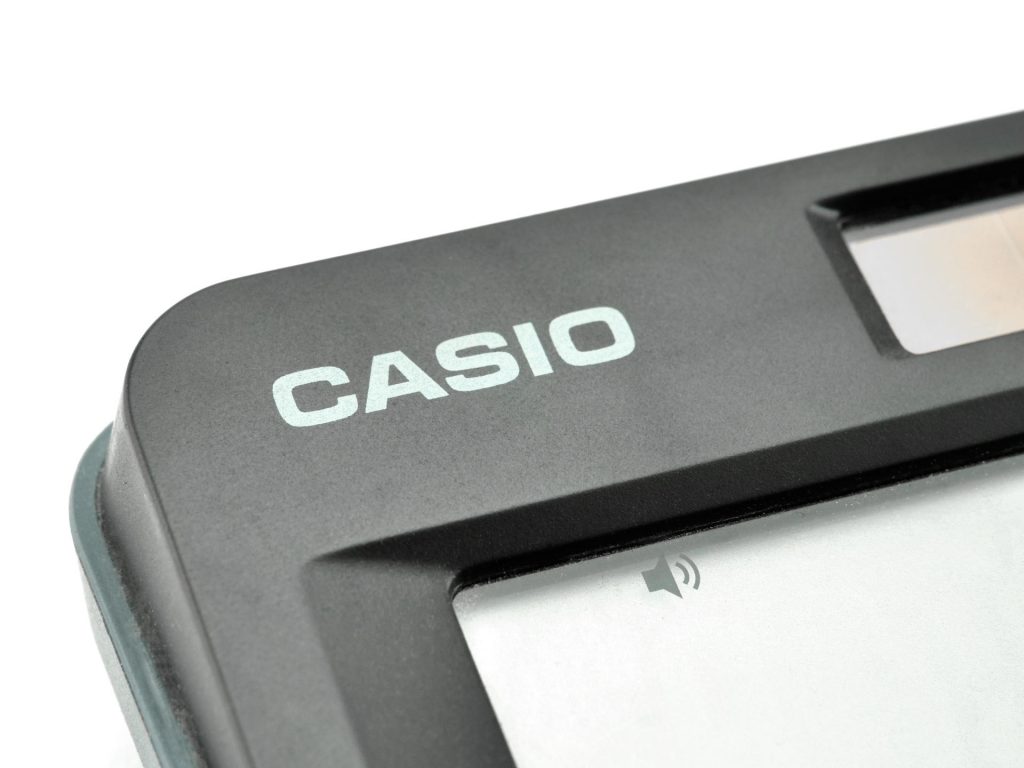
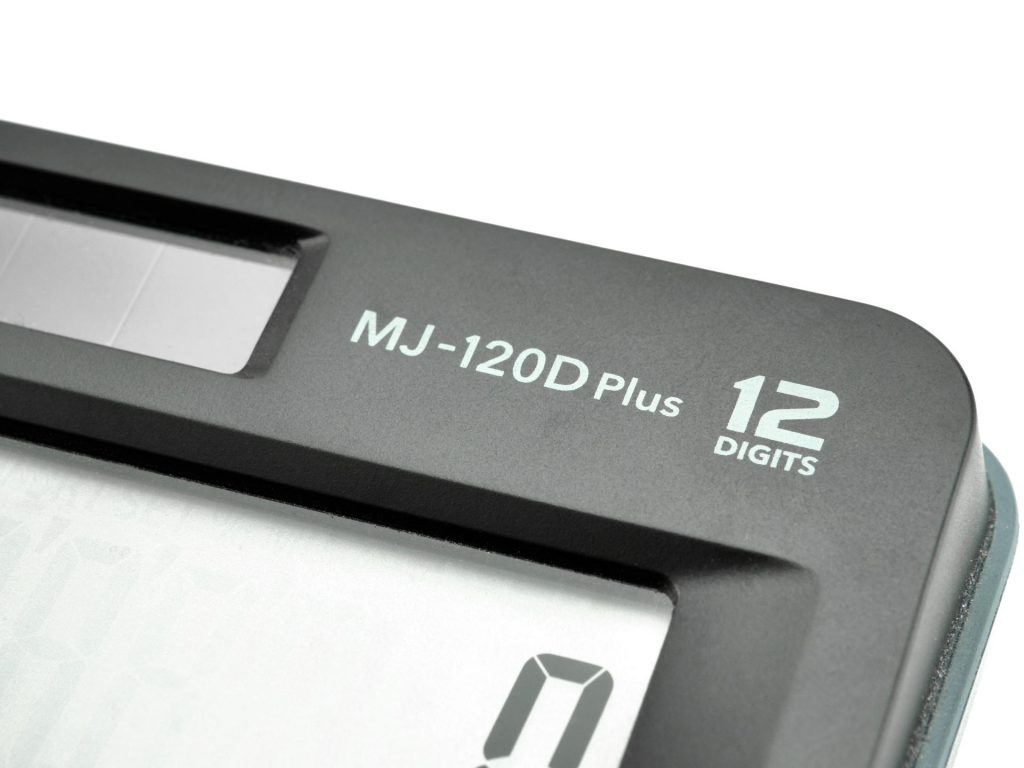
The Casio DJ-120D brings some interesting things to the table.
Unfortunately it fails to convince.
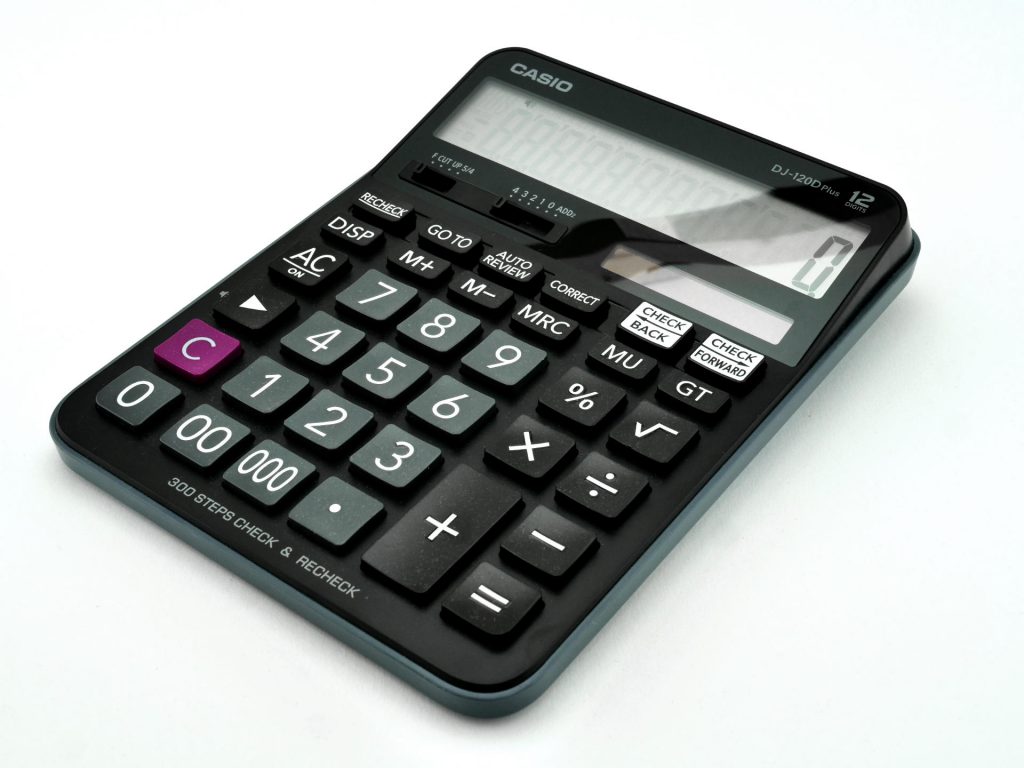
EXTENSIVE ROUNDING SETTINGS
Many different rounding settings for many fields of application.
TRIPLE ZERO
Probably the most striking feature in this calculator. A dedicated key for triple zeros (000).
CHECK & CORRECT
You can review the history of your calculations and even correct them.
MODERN LOOK
Especially the seamless display-portion makes for a nice optic.
VERY BIG OVERALL & VERY BIG KEYS
This might be a pro for many people, but for me personally it's too big as a desk calculator. It takes up huge amounts of space and the big keys are so far apart, it's a hassle to use.
BAD KEY-LAYOUT IN COMPARISON TO OTHER MODELS
Unfortunately, some keys are in a somewhat awkward place. Other models by Casio have done much better.
DISPLAY HAS STRONG REFLECTIONS
The seamless display-portion is very reflective. It can be very hard to see the display at night.
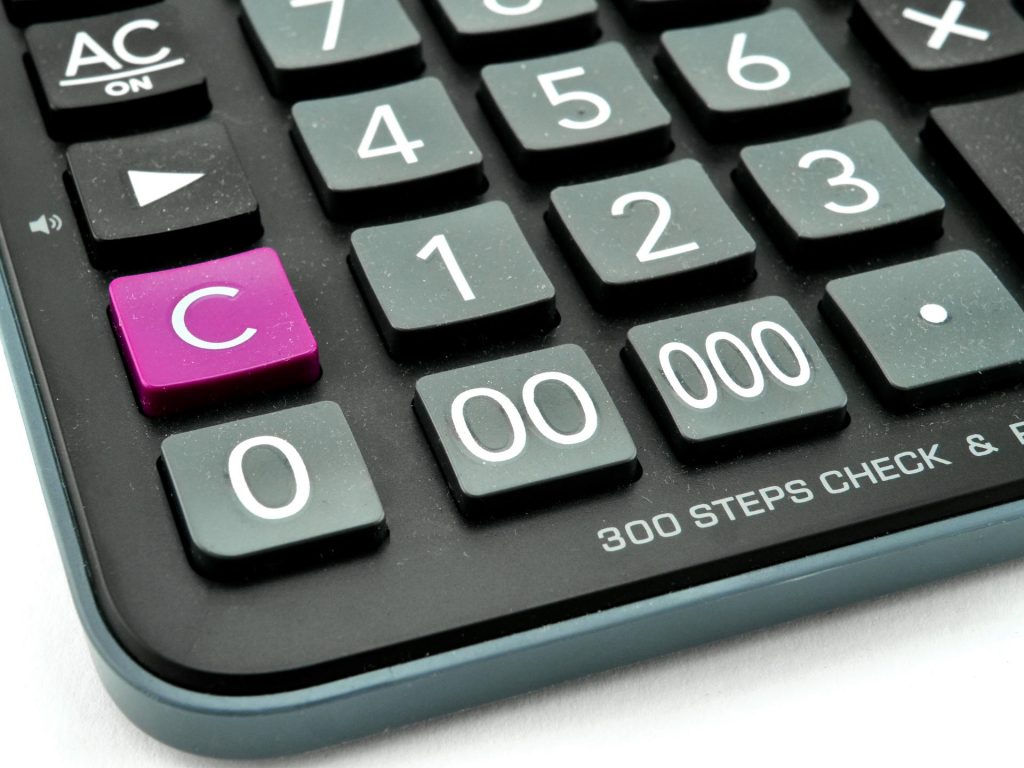
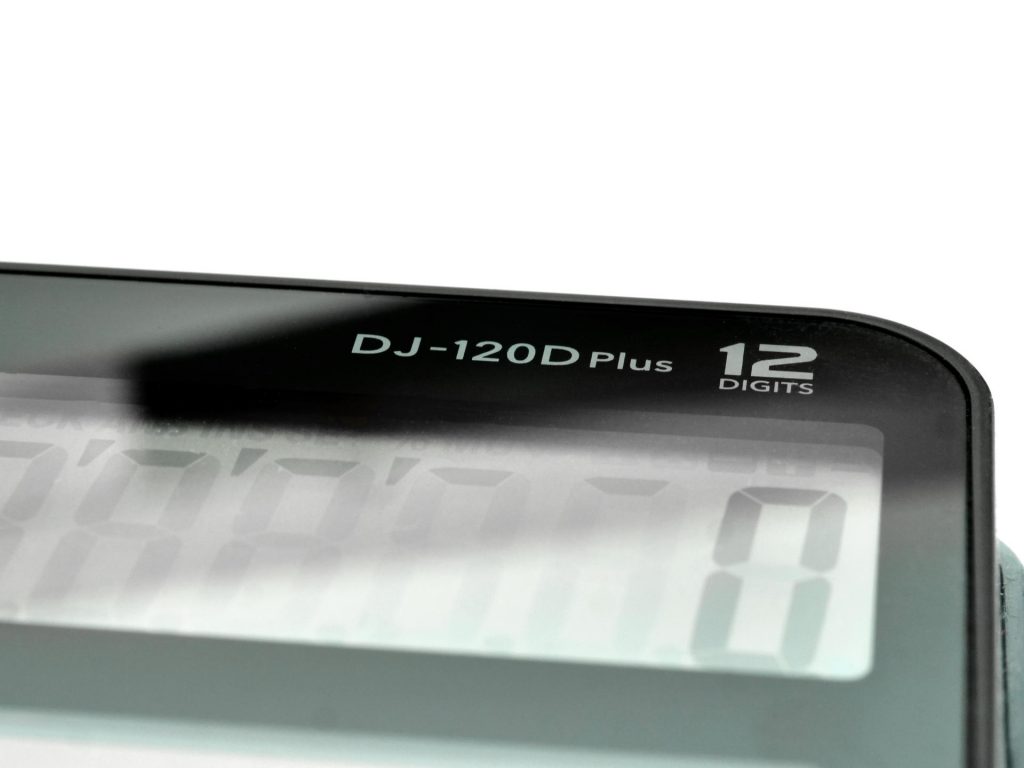
Voice assistants always fascinated me. I even made a working one by myself using a Raspberry Pi some time ago. I could ask for the weather, the news and it could even tell jokes.
When I saw how cheap there was a Google Home Mini available I immediately got one. Though, I was a bit skeptical as well: Is it only a funny gadget? Will I lose interest after a few weeks?
Without talking much around it: No. This was one of the best purchases I ever made and it can improve so many aspects of your life.
Following are features of the Google Assistant I still use on a daily base:
My wake-up-routine will turn on the radio and at the same time set the smart lights on sunrise. It's a really pleasant way to wake up and my getting out of bed immediately became so much easier.
I would buy a Google Home again for this feature alone.
I can keep my lights on all the time all the way into bed. When I'm lying in bed comfortably, I will say "Hey Google, good night" and the sleep-routine starts. First, it will turn off all the lamps and then it starts to play white noise. White noise covers any background noise and is an overall soothing sound that makes falling asleep easier. It automatically stops after 20 minutes.
One of the coolest things to use a voice assistant for is smart lights. I use the Google Assistant to control mine every day. But even without smart lights, it's a tool I definitely wouldn't want to miss out of my life ever again.
Setting a timer is quick, easy and reliable. I use it every day for pizza, noodles or when I have to leave the house. Big helper.
When I'm in a hurry and don't have a clock at my disposal or at night, asking for the time comes in really handy. Also something I make daily use of.
Depending on how you ask, the Google Assistant can give you a full-blown detailed forecast of the whole upcoming week or only the current temperature outside.
It's a very flexible command that works really well. It always understands the amount of information you want and your desired timeframe.
An especially useful feature when laying in bed and suddenly getting an important thought. You can remember it for the next day without needing to turn on the lights to write it down.
Now the features I am using a few times per week.
Google Home is perfect for quick rate conversions between currencies. I usually need it when browsing online-shops.
Feet to meters, inches to centimeters, Fahrenheit to Celsius, etc. Really helpful feature.
Asking for the height of mountains or the population size of countries is something I still use more often than I would've thought.
If I quickly need to know how long a store has still opened, consulting the Google Assistant always works like a charm.
If I quickly want an overview over something I will ask "Hey Google, what is [thing]". It usually reads the first paragraph of the Wikipedia-article or an excerpt from another website. It works well most of the time and provides a relatively good overview on the topic.
If I want to get an overview of how long it will take to get from A to B (with live traffic of course), the Google Assistant also never disappoints.
All in all, the Google Assistant is a life-changer that makes things so much easier. I can happily recommend a Google Home device to you.